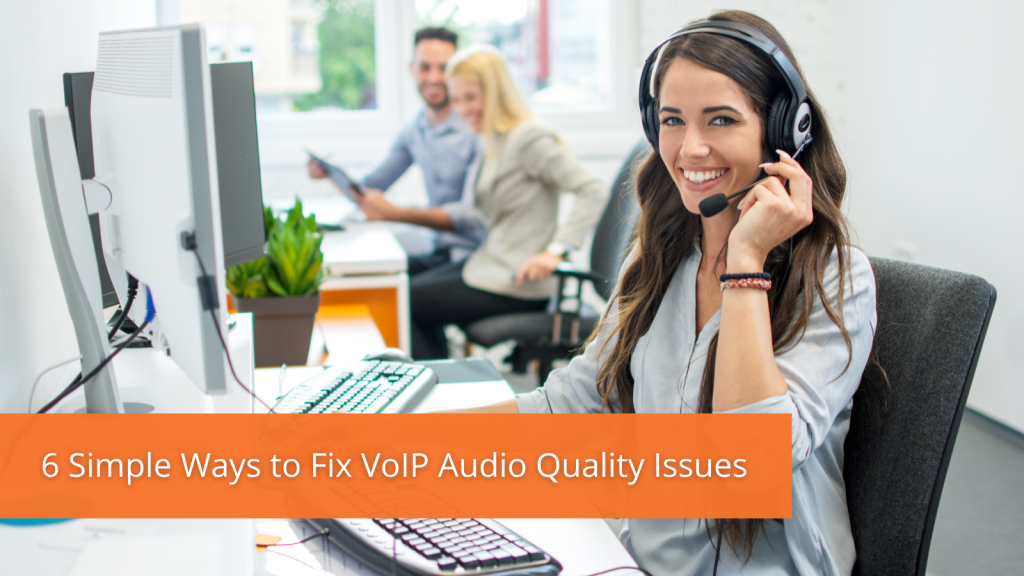6 Simple Ways to Fix VoIP Audio Quality Issues

This blog was updated August 30, 2023:
Voice over Internet Protocol (VoIP) has transformed the way businesses communicate, offering cost-effective and flexible solutions. However, one common challenge that can arise is poor audio quality during calls. If you’re experiencing audio issues with your VoIP calls, fear not! In this blog post, we’ll explore six simple ways to troubleshoot and fix VoIP audio quality problems.
6 Simple Ways to Fix VoIP Audio Quality Issues
- Check Your Internet Connection: A stable and reliable internet connection is essential for VoIP calls. Poor audio quality can often be attributed to inadequate bandwidth or network congestion. Ensure you have a sufficient internet speed and consider using Quality of Service (QoS) settings to prioritize VoIP traffic over other data.
- Use Quality Headsets or Devices: The quality of your audio devices matters. Low-quality headsets or phones can result in distorted or unclear audio. Invest in reputable headsets or phones that are designed for VoIP communications, as they often come with noise-canceling features that improve call clarity.
- Update Firmware and Software: Outdated firmware and software can lead to compatibility issues and audio glitches. Regularly check for updates for your VoIP hardware, applications, and operating systems. Keeping everything up-to-date can resolve many audio quality problems.
- Consider Echo Cancellation: Echoes during calls can be distracting and irritating. Implementing echo cancellation technology, available in many VoIP systems, can significantly reduce or eliminate echo, leading to clearer conversations.
- Adjust Codecs and Bandwidth: VoIP systems use different codecs to compress and transmit audio. Some codecs may prioritize bandwidth efficiency over audio quality. Experiment with different codecs to find the balance between bandwidth and audio clarity that suits your needs. Also, ensure that your network bandwidth is sufficient for your call volume to prevent congestion-related issues.
- Monitor Network Conditions: Network issues like packet loss, latency, and jitter can adversely affect audio quality. Regularly monitor your network’s performance using diagnostic tools. If you notice anomalies, work with your IT team or service provider to optimize your network settings and resolve any underlying network issues.
VoIP audio quality issues can disrupt communication and impact business productivity. However, with a proactive approach and some troubleshooting, you can quickly resolve most audio quality problems. Remember to prioritize a stable internet connection, use quality audio devices, keep your systems updated, and optimize your network settings. By following these simple steps, you’ll ensure that your VoIP calls are clear, crisp, and conducive to effective communication. If you have any questions or comments, please feel free to leave them below, give us a call at 1-800-398-8647, or visit our website at www.voipsupply.com.